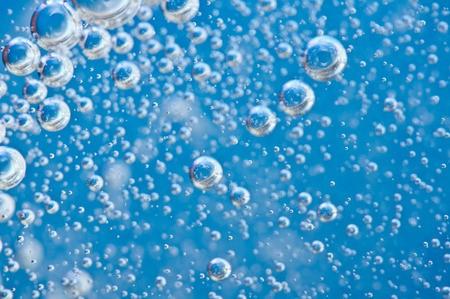Your Cart is Empty
While they may blast state-of-the-art HVACs to clear the smoky air and keep the air smelling fresh, casinos do not pump enriched oxygen onto the casino floor for a number of reasons. First, medical-grade oxygen and a special system to pump it would cost millions. Second, because pure oxygen is a flame accelerant, increasing the percentage of oxygen in the air above a certain level would create an enormous fire hazard. Under the right circumstances, lighting a cigarette could cause an instant fire. Casinos would never risk an enormous accident or a violation of the casino's insurance policy for your extra dollars.
It is true that people breathe pure recreational oxygen in Vegas to stay mentally alert, increase focus and mental clarity (Moss). Oxygen bars, and more recently, portable recreational oxygen canisters from companies like Oxygen Plus, are meeting the need for pure oxygen for those who work, play and party hard. In addition to helping one recover from a late night on the town, breathing O+ oxygen can help high rollers and poker masters stay mentally alert and focused while improving their recall and reaction time (Scholey).

There are three different oxygen delivery systems on a commercial airline.
1) Pilots of commercial airlines breathe oxygen in the cockpit from a built-in oxygen system that incorporates a use of a mask and oxygen cylinder. Pilots breathe oxygen to stay alert and combat the onset of hypoxia.
2) Commercial planes also have oxygen canisters that administered to passengers by flight attendants. This oxygen is used in the event of a medical emergency or if a passenger asks for oxygen. The pressure of each canister is inspected before each flight for safety, and airlines such as Delta Airlines offer the oxygen to passengers free of charge.
3) The oxygen that passengers receive from the overhead masks that drop-down when cabin pressure suddenly changes does not flow from a canister, but rather, the oxygen is delivered from a chemical reaction that lasts for a limited time. Pulling down on the mask causes the interaction of certain chemicals to combust, creating oxygen that flows to the mask. While it is safe to breathe, it usually only provides 15 minutes of oxygen.
Additionally, some passengers carry portable oxygen concentrators (POCs) on board for medical reasons like COPD. Currently, there are around twenty oxygen concentrators that are approved by the FAA.
At cruising altitude, airline cabins have lower-than-normal air pressure, causing oxygen saturation to drop to 10% lower than normal (Boosting Your Energy, a Special Health Report from Harvard Medical School). Business and other travelers are often tired, worn out and physically weak from coping with growing airport security measures, increased flight delays, bad food, layovers and sometimes excess consumption of alcohol or caffeine products. As depleted oxygen levels can leave you feeling sluggish and depleted,Oxygen Plus suggests taking a few deep breaths of O+ pure recreational oxygen after you land so you can hit the ground running.

There isn't less oxygen at higher elevations; the molecules just get too large for the body to process. As elevation increases, oxygen molecules expand due to less atmospheric pressure. So, a person's body gets less oxygen delivered to its cells the higher that person goes. The actual percentage of oxygen remains the same (~21% oxygen) throughout the Earth's explorable atmosphere, whether you're in the flatlands of Texas or summiting the Rockies.
The reason people at higher elevation get altitude sickness and the reason airlines are pressurized is not because there is less oxygen to breathe, but due to less "sea-level-sized" oxygen molecules. The pressurized airline cabins help simulate the elevation at sea level so oxygen molecules do not expand too much, helping the body get more oxygen delivered to its cells the way it normally would on land.
Because everyone's bodies are different, some passengers may still be affected receiving less oxygen when they fly. Most people will only feel tired or get a slight headache, but traveling by commercial air can aggravate certain serious medical conditions. Oxygen Plus advises people with any medical condition to consult with their doctor to discuss potential complications before flying or using any Oxygen Plus products.
Oxygen is NOT flammable. It will, however, cause an existing flame to grow more rapidly or appear to explode. Compressed oxygen is especially dangerous. If you are using any form of oxygen tank for medicinal, recreational or other purposes, you should take special precautions around flames of any size, including those as small as a cigarette lighter or candle. As the leading manufacturers of portable recreational oxygen, Oxygen Plus canisters are safe if the product is used and stored as directed.
Help put these common myths to rest. Impress your friends the next time you're in Vegas, be confident of what is in the air on a plane or at a higher altitude and avoid potentially hazardous situations in your active, daily life.

Moss, MC, Scholey, AB, Wesnes, K, "Oxygen administration selectively enhances cognitive performance in healthy young adults: A placebo-controlled double-blind crossover study," Journal of Psychopharmacology, 1998 Dec;138:27-33
Scholey AB, Moss MC, Neave N, Wesnes K, "Cognitive Performance, Hyperoxia, and Heart Rate Following Oxygen Administration in Healthy Young Adults," Physiology & Behavior, 1999 Nov;67(5):783-9
